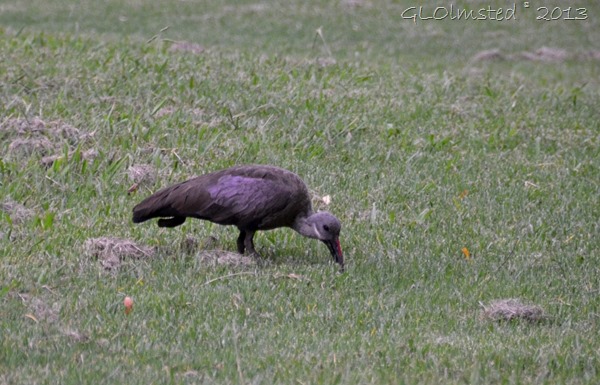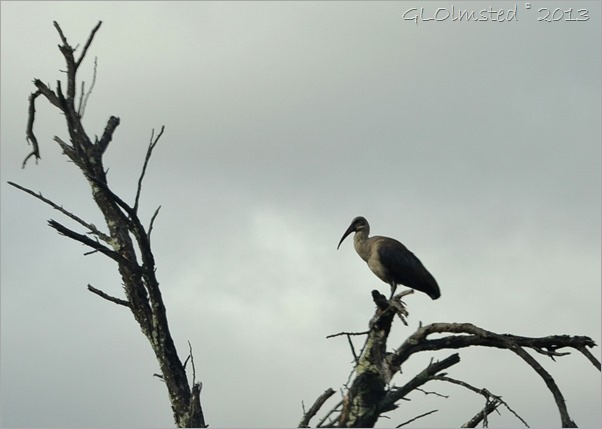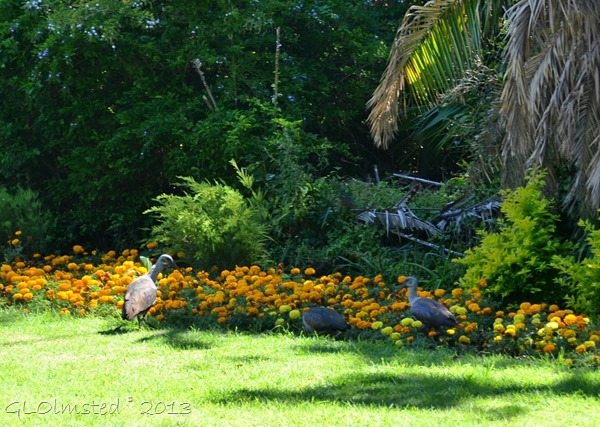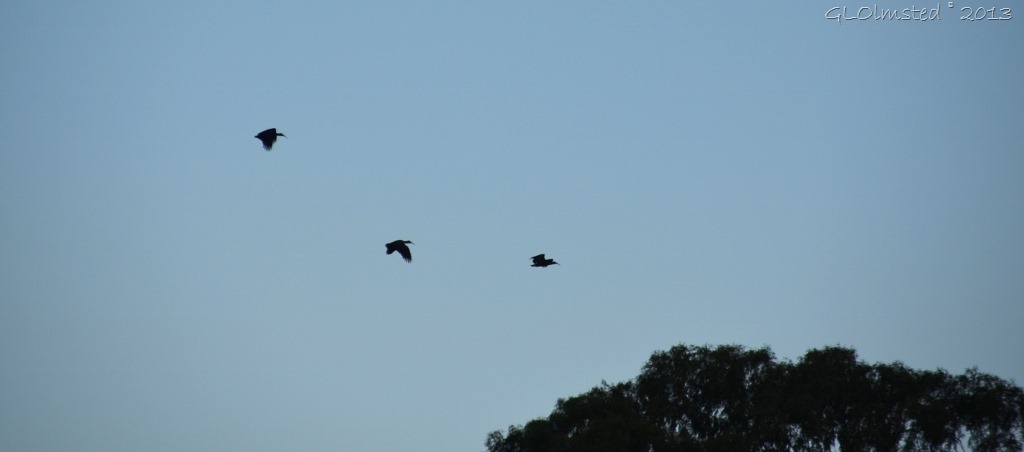Haa-haa-haa-de-dah, haa-haa-haa-de-dah, Hadeda, every morning and every night. I spent two months hearing Hadeda Ibis from east to west across South Africa.
I first saw one Hadeda at Lover’s Rock Caravan Park not far from Johannesburg where Joan and I camped on my first night in South Africa. It feeds mainly on earthworms using its long scimitar-like bill to probe soft soil. It also eats larger insects, spiders, small lizards and snails.
Listen to the Hadeda Ibis sound
https://geogypsytraveler.com/wp-content/uploads/2013/05/13-Hadeda.wma
(This is suppose to be audio of the Hadeda. If it’s not please let me know.)
Yet they usually move around in flocks numbering up to 20 birds, or 100 out of breeding season. Upon waking up outside Crocodile Gate at Kruger National Park, at the far west border with Mozambique, a large and noisy flock flew up out of the trees. They are particularly vocal at dawn and dusk on the way from and to their overnight roosts.
We saw the Hadedas at Mountain Zebra National Park in the Eastern Cape. They are large at about 30 inches (76 centimeters), grey to partly brown and have a narrow white horizontal stripe across its cheeks sometimes called the moustache. The plumage over the wings has an iridescent purple sheen. Its legs are blackish and the upper surfaces of the toes are red. The large grey to black bill has a red stripe on the upper mandible. Male and female look the same.
I saw Hadedas at St. Georges Park in Port Elizabeth along the Indian Ocean. They are found throughout open grasslands, savannas, wetlands, urban parks, school fields and large gardens.
I saw the Hadedas at Rodene Farms where I stayed in Ceres in the Western Cape. As I watched sunset from the dam they flew noisily into the trees in great numbers. They often use the same roost site year-round, and year after year, although wander several miles away to forage during the day.
I also saw and heard the Hadedas at at many other places, they seem to be everywhere.




